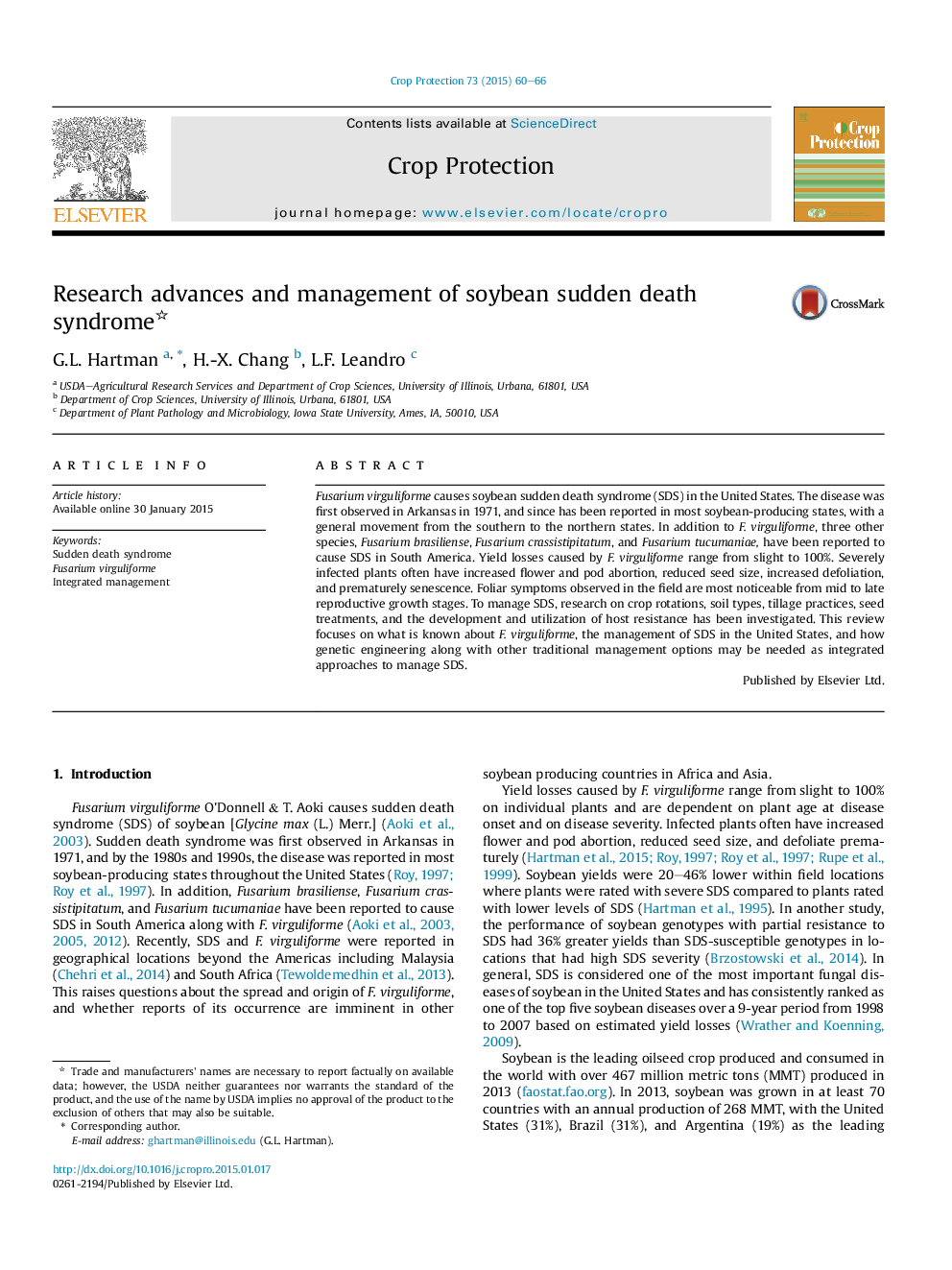| کد مقاله | کد نشریه | سال انتشار | مقاله انگلیسی | نسخه تمام متن |
|---|---|---|---|---|
| 4505772 | 1624314 | 2015 | 7 صفحه PDF | دانلود رایگان |

• Fusarium virguliforme causes soybean sudden death syndrome in the United States.
• Severely infected plants have compromised growth and yields.
• Management strategies including host resistance were reviewed.
• Integrated approaches including genetic engineering were examined.
Fusarium virguliforme causes soybean sudden death syndrome (SDS) in the United States. The disease was first observed in Arkansas in 1971, and since has been reported in most soybean-producing states, with a general movement from the southern to the northern states. In addition to F. virguliforme, three other species, Fusarium brasiliense, Fusarium crassistipitatum, and Fusarium tucumaniae, have been reported to cause SDS in South America. Yield losses caused by F. virguliforme range from slight to 100%. Severely infected plants often have increased flower and pod abortion, reduced seed size, increased defoliation, and prematurely senescence. Foliar symptoms observed in the field are most noticeable from mid to late reproductive growth stages. To manage SDS, research on crop rotations, soil types, tillage practices, seed treatments, and the development and utilization of host resistance has been investigated. This review focuses on what is known about F. virguliforme, the management of SDS in the United States, and how genetic engineering along with other traditional management options may be needed as integrated approaches to manage SDS.
Journal: Crop Protection - Volume 73, July 2015, Pages 60–66